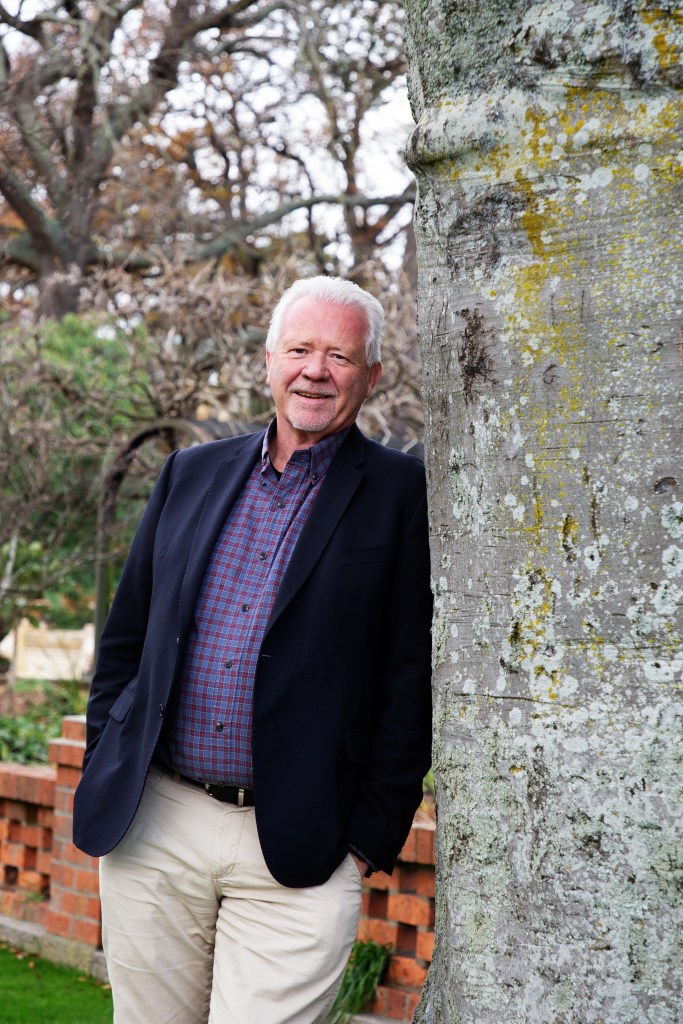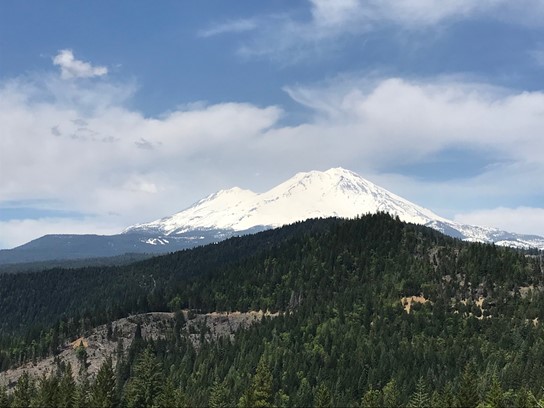Demand for decarbonisation solutions is a game changer for this asset class.
David Brand is the founder, chair and CEO of forestry investment management business New Forests. He started the business in 2005 and New Forests now has offices across the world, with around $10 billion in assets under management.
“In 17-and-a-half-years we have never had negative returns. It’s a low-volatility, positive return asset class, there’s low correlation with other asset classes, and positive correlation with inflation. There’s a real asset component. And it’s a real asset with climate benefits.”

He says clients tend to be large institutional investors like pensions funds, that make up about 75% of the capital, as well as insurance and reinsurance companies, and in emerging markets, New Forests has some of the development finance institutions and some corporates.
“We have mostly long-term, patient capital and we operate the business with a set of regionally focused investment strategies. We have an Australia/New Zealand strategy, a Southeast Asia strategy, a US strategy and an Africa strategy. Our idea was that clients who wanted to put together a diversified international portfolio of forestry market exposures could pick different managers in different regions with specialties and thematic approaches.”
With $10 billion in assets under management, New Forests is the second-largest private forestry manager in the world.
“We’ve managed to acquire about 1.2 million hectares of land that includes timber plantations, agriculture, conservation areas. We have vertically integrated into saw milling and an international timber trading business. We’ve always had this thematic interest in sustainability, particularly the role of forests and forestry investment and looking at things like climate solutions, biodiversity, conservation, creating shared value with rural communities and through all of our investment strategies we’ve picked up on those themes to see how we could benefit from being on the right side of the trend.”
They’ve done dozens of carbon transactions worth hundreds of millions of dollars in revenue. “That’s been one of the areas we have integrated into our forestry management,” Brand tells Forbes Australia in an interview.
“Forestry is an incredibly diverse interconnected system.”
– David Brand, found and CEO of New Forests
“In terms of returns, we’ve had market-leading returns, because the bulk of our assets are exposed to the Asia-Pacific region which has seen a growth story with the rise of China. In 2006, China was a wood exporter and today it is the greatest importer of timber in the world. We’ve been, over the 17 years of our life, on the right side of that trend. The other big trend in forestry has been the transition from the extensive logging of natural forests in Canada, Siberia and so on, into very intensive feedstock plantations in the southern hemisphere. That really is the future of forestry, in those agricultural-like forestry plantations, that create high-quality, efficient feedstock for large scale industry.
“Forestry is an incredibly diverse interconnected system. You’ve got the pulp and paper market, the energy market, the lumber market, plywood, you name it. The sources of supply comes from all six continents, the demand is in all six continents so there is a continuous supply-demand balance across all of these markets. Timber can go from one market, if the market goes down, it can be shifted into another market. But these are big, complicated supply chains. They don’t just snap and shift, they morph, when you get a sudden blockage, for example if there are trucking shortages, or port congestion where ships can’t get in, or things get shutdown because half the workforce had Covid. If you combine all these factors and people were stuck at home doing home renovations, demand went up and supply was choked off. It’s like a rope, it snaps tight and goes vertical. If you want lumber, it was a matter of ‘how much do I have to pay?’.”
Prices skyrocketed, with people joking it was the only commodity that rose faster than Bitcoin at the time, Brand says.
“With forestry, the view is that 70% of the return comes from the growth of the tree. As trees grow, they are appreciating assets. They get bigger so they become more valuable, and that happens because of sunlight and rainfall.. You are booking your asset value appreciation plus your income as your total return. Your underlying asset value is less volatile than the market you are exposed to because you don’t have a maturity point, like a field of tomatoes. You can grow them for a couple more years if the market is down, you can take on more risk and get the a stable return,” he explains.
“You have the underlying land, the timber, the carbon credits, water rights, wind farms, solar farms, potentially bio-diversity value can be extracted. You start to see this asset class that has interesting fundamentals, but it is also full of the upside option value.”
Brand says this is driving even more sophisticated analytical approaches in terms of looking at how land is allocated against multiple price signals, agriculture, forestry, carbon prices, which all affect how capital is allocated and how land is used.
“It gets ever more granular. If you look at a geo spatial model of a farm and you can see which areas have lower biomass productivity and you flip those into forestry or other uses. It extracts another 100 basis points out of the asset through the evermore sophisticated information you can apply.

“We can globalise our platform. We are in four regions at the moment. We have started moving into agriculture in Australia. We found when we were buying these big bulk forestry plantations assemblages, some of them should not have been in forestry. We converted them back into cropping and now they are producing wheat and canola and barley.”
They have also bought grain farms, purchasing Lawson Grains earlier this year.
“The landscape will have agriculture, grazing, forestry, conservation and all of that is investable because you have a carbon market, agriculture markets, forestry markets. When you can start to play across the whole landscape, you can start to shift and re-segment how land is used to extract the most value from it. Our new fund in Australia is called the Australia New Zealand Landscapes and Forestry Fund, which means we can invest across the whole diverse range of assets and potentially make more money for investors. Once you get that optionality, you then work that to extract unrealised value.
“In the US our strategy uses geo spatial heat mapping tools where you can put multiple data layers and extract areas that have climate mitigation benefit and create zones of how much climate mitigation they have. You buy them for the net present value of their forestry cash flows at a discount rate then flip them into an optimisation between timber and carbon credit sales and add 200 to 400 basis points to the return.
“Our Asian fund is a blended finance structure, where we have conventional investors who are investing in the forestry, then impact investors, in a Class B, that take a lower return, but an amount of money equal to 50% of what they put in goes into high impact activities like biodiversity, for example.
“In this case, the impact tranche was bought by the French oil and gas major Total and they take a lower return but they get the rights to buy the carbon credits from the vehicle. There’s a symbiosis between the two classes of investors.”
In Tasmania, New Forests has developed a $50 million pilot program called ActivAcre that identifies parts of farms that aren’t producing much value for the farmer. They reforest those areas, pay the farmer a fixed income, and generate a return from selling the carbon credits into the ACCU market and ultimately having a timber crop at the end.
“You start to see how the farmers can take annual risk and the institutional investors can take multi-decadal risk and you match those up and you get a better optimal land use.”
– David Brand, founder, chair and CEO of forestry investment management business New Forests
“It starts to create that variegated landscape where we can partner with the farmers to reoptimise the whole use of the farm,” says Brand.
It was launched in July with about 50 farmers interested in joining the program.
“The farmers find that up to 30% of a property can be reforested without the loss of agricultural productivity,” Brand says.
“You start to see how the farmers can take annual risk and the institutional investors can take multi-decadal risk and you match those up and you get a better optimal land use. We convert that long-term return into a fixed income for the farmer with annual payments. It allows us to steadily expand.”
New Forests bought out Great Southern Plantations, a retail scheme that went bankrupt in 2009. “That was some of the scruffy land that probably shouldn’t have been under forestry. We’ve rationalised it now and it’s worth probably three of four times what we paid for it.
“We bought Gunns when they went bankrupt. I went out there and met a bulldozer driver who said that after we bought Gunns, he had just got paid on time for the first time in five years. In 10 years, we have never not paid on time. It means everybody is bankable because we are paying them and they are paying their bills and they can go out and buy the latest harvesting machines and shave a buck off the costs of their harvesting. We move them to a five-year contract so they are even more bankable. You just get this virtuous circle of recapitalising the entire industry. Now it is worth four times what it was. You could have bought the whole forestry industry of Australia for $5 billion in 2010. Now it would cost you $25 billion just from everybody reinvesting in the businesses and becoming more internationally competitive.”
Brand tells the story of a farmer whose children had left to work in the mines, but when he got a five-year contract and was able to buy new equipment, the children had come back, joined the family business and the younger people had started a football team and social interaction increased in the community.
“The whole social fabric was rebuilding and that is something we can be proud of. Growing the trees, processing them, it is all being done by people in rural communities.”
In the next 12-18 months, for Australia and New Zealand there will be the first close of the new ANZ Landscapes and Forestry Fund, with a $600 million target.
“We’ve just finished investing our third-round fund which was an $873 million fund across Australia and New Zealand. We’ve just had the close of our second-round Asian fund in March so we are deploying that in Asia. We’ve just launched our first African fund a month ago,” Brand says.
The Africa fund seeks to consolidate the many sub-scale plantations across Africa and has investment from the UK, Norwegian and Finnish governments. It’s an initial US$200 million and has made its first acquisition of a company called Green Resources that is going through final regulatory approvals.
“So much has changed in the past four or five years with carbon markets and demand for decarbonisation solutions. It’s a game changer for this asset class.”
